
Sir John Betjeman was an English poet, writer, and broadcaster. He was Poet Laureate from 1972 until his death. He was a founding member of The Victorian Society and a passionate defender of Victorian architecture, helping to save St Pancras railway station from demolition. He began his career as a journalist and ended it as one of the most popular British Poets Laureate and a much-loved figure on British television.
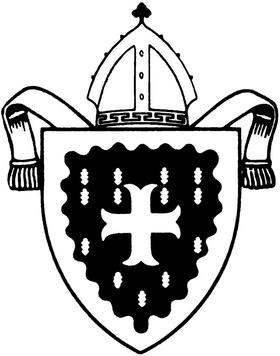
The Anglican Church of Korea is the province of the Anglican Communion in North and South Korea. Founded in 1889, it has over 120 parish and mission churches with a total membership of roughly 65,000 people.
Edwin Emmanuel Bradford was an English clergyman and a Uranian poet and writer of stories, articles and sermons. His prolific verse celebrating the high spiritual status of love between men and boys was remarkably well-received and favourably reviewed in his lifetime.

Norwich Cathedral, formally the Cathedral Church of the Holy and Undivided Trinity, is a Church of England cathedral in the city of Norwich, Norfolk, England. The cathedral is the seat of the bishop of Norwich and the mother church of the diocese of Norwich. It is administered by its dean and chapter, and there are daily Church of England services. It is a Grade I listed building.
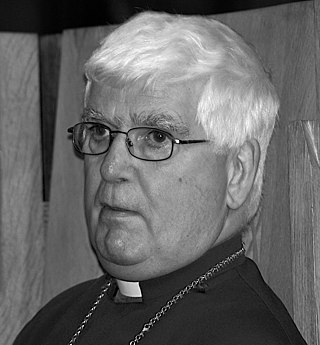
Thomas Frederick Butler is a British retired Anglican bishop. He was the ninth Anglican Bishop of Southwark. He was enthroned in Southwark Cathedral on 12 September 1998. He retired from this position on 5 March 2010. In 2014, Butler was involved in the transition process for the new Diocese of Leeds as "mentor bishop"; he remains an honorary assistant bishop of that diocese.
"Slough" is a ten-stanza poem by Sir John Betjeman, first published in his 1937 collection Continual Dew.
Nigel Simeon McCulloch, is an Anglican cleric who held high offices from 1978 until he retired as Bishop of Manchester in 2013.
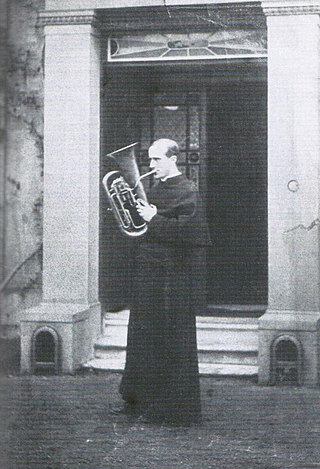
George Ratcliffe Woodward was an English Anglican priest who wrote mostly religious verse, both original and translated from ancient authors. The best-known of these were written to fit traditional melodies, mainly of the Renaissance. He sometimes harmonised these melodies himself, but usually left this to his frequent collaborator, composer Charles Wood.
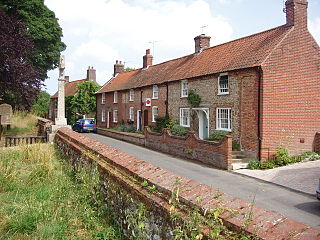
Great Snoring is a rural village in North Norfolk by the River Stiffkey, in the east of England. It is situated approximately 25 miles (40 km) north-west from the city and county town of Norwich, and 2 miles (3 km) north from the larger village of Little Snoring.
Edward Mirzoeff CVO, CBE is a prominent British television producer and documentary filmmaker.

Candida Rose Lycett Green was a British author who wrote sixteen books including English Cottages, Goodbye London, The Perfect English House, Over the Hills and Far Away and The Dangerous Edge of Things. Her television documentaries included The Englishwoman and the Horse, and The Front Garden. Unwrecked England, based on a regular column of the same name she wrote for The Oldie from 1992, was published in 2009.

Graham Richard James is a retired British Anglican bishop. He was Bishop of Norwich in the Church of England from 1999 to 2019.

Metro-land is a BBC documentary film written and narrated by the then Poet Laureate of the United Kingdom, Sir John Betjeman. It was directed by Edward Mirzoeff, and first broadcast on 26 February 1973. The film celebrates suburban life in the area to the northwest of London that grew up in the early 20th century around the Metropolitan Railway (MR)—later the Metropolitan line of the London Underground.

Sir John Betjeman (1906–1984) was a twentieth-century English poet, writer and broadcaster. Born to a middle-class family in Edwardian Hampstead, he attended Oxford University, although left without graduating. He turned down a position in the family furniture business, and instead took a series of jobs before becoming the assistant editor of The Architectural Review in 1931, which reflected a deeply held affection for buildings and their history. That same year he published his first book, Mount Zion, a collection of poems.
Clement Corbet was an English jurist.
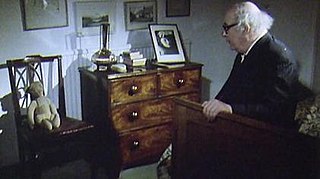
Summoned by Bells is a BBC TV film of John Betjeman's verse autobiography of the same name – " a unique and touching account of an Edwardian middle-class childhood."
Rupert William Lycett Green is a British fashion designer known for his contribution to 1960s male fashion through his tailor's shop/boutique Blades in London.
Peter John Fox is a British priest in the Church of England who served as Bishop of Port Moresby in the Anglican Church of Papua New Guinea from 2002 to 2006, as an honorary assistant bishop in the Diocese of Norwich between 2006 and 2018, and since August 2019 an honorary assistant bishop in the Diocese of Leicester.

The statue of John Betjeman at St Pancras railway station, London is a depiction in bronze by the sculptor Martin Jennings. The statue was designed and cast in 2007 and was unveiled on 12 November 2007 by Betjeman's daughter, Candida Lycett Green and the then Poet Laureate Andrew Motion to commemorate Betjeman and mark the opening of St Pancras International as the London terminus of the Eurostar high-speed rail link between Great Britain and mainland Europe. The location memorialises the connection between St Pancras station and Betjeman, an early and lifelong advocate of Victorian architecture.
Alan Robert Gillion is a British Anglican bishop and former actor. From 2014 to 2018 he was the Bishop of Riverina in the Anglican Church of Australia; since 2020, he has been a parish priest in Streatham, South London.













